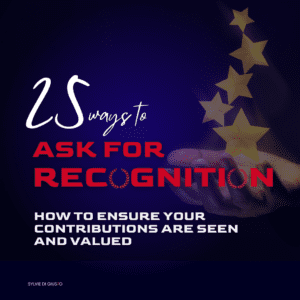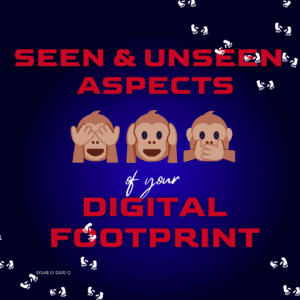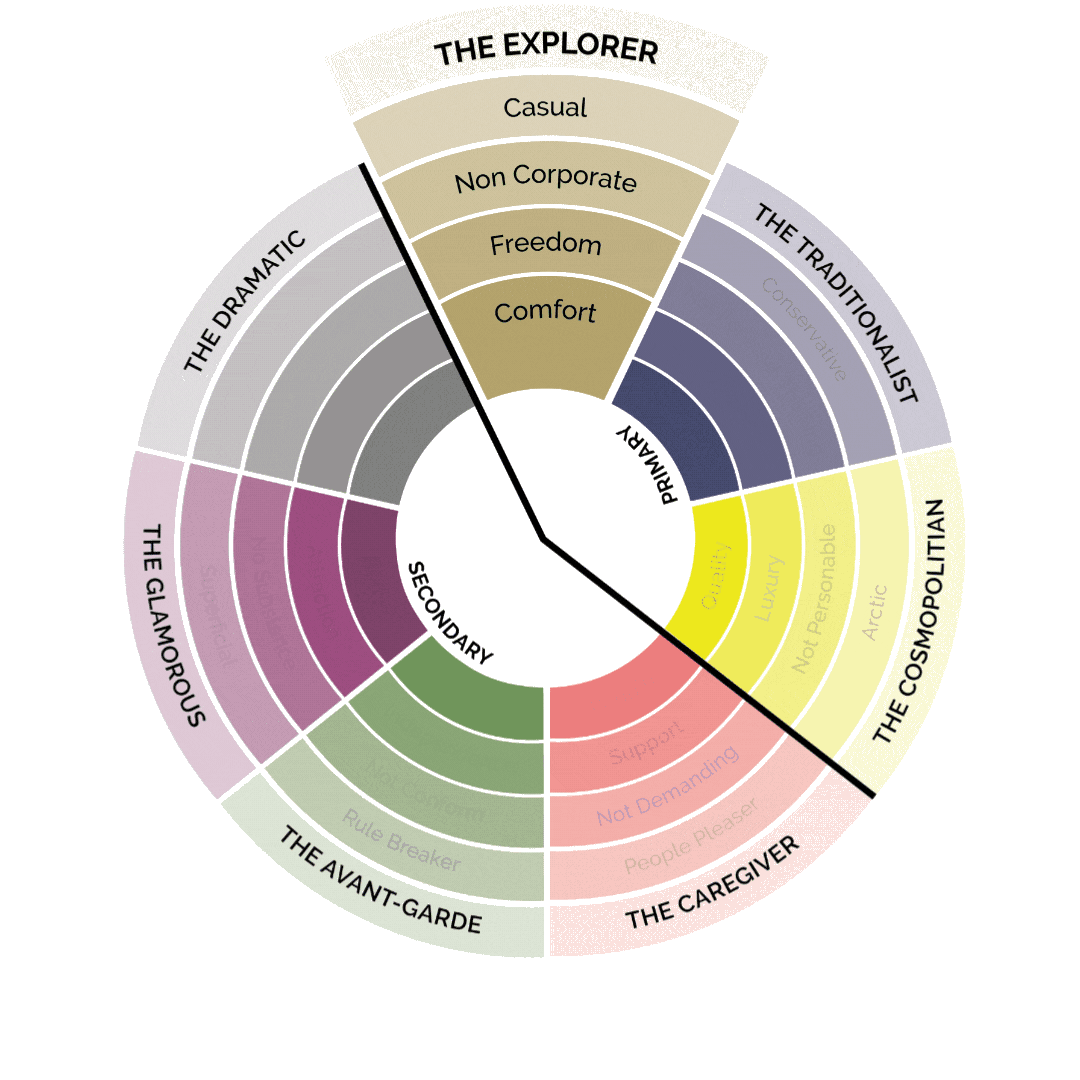5 Elements of your Emotional Intelligence at Work
In the workplace, the way you present yourself has the power to influence the decisions of decision-makers, customers, stakeholders, and more. They are heavily influenced by their own unconscious biases, and the way you interact with them can have a huge impact on the outcome.
These five elements of emotional intelligence can help any professional in the workplace stand out amongst the crowd. They can help professionals maximize their potential in the workplace by ensuring they are aware of how their appearance, behavior, communication, and digital presence affect the people around them.
1. Visual Intelligence (Your Appearance)
This refers to the way you present yourself through the clothes you wear, the makeup or hairstyle you choose, the accessories you use, and the general appearance you give off. It will impact how customers perceive your professionalism and how decision-makers view your presence in the workplace. It solely refers to our outward look—everything that we, ourselves, and others can see—and that, therefore, significantly can impact the value we place on ourselves and others place on us. You may believe that your visual appearance shouldn’t matter and, quite rightly, that you’re much more than your look. It is, of course, true that each of us is far more than the sum of our appearances. However, humans are visual creatures. In a blink of an eye, they assess our visual appearance and assume the characteristics they think our appearance conveys. Consequently, even if you wish it wouldn’t matter, how you look does impact how others perceive you. Some aspects of your appearance include:
- Body Image (weight, height, shape, size)
- Health (physical, mental, social)
- Clothes (fit, style, colors, quality, brands, maintenance)
- Accessories, Jewelry, Gadgets
- Grooming, Hygiene (Skin, Hair, Nails, Teeth, Makeup)
- and more…
Decision-makers frequently form a subconscious assumption about someone’s level of success, capabilities, education, and professional reputation based on their appearance. Unfair? Yes. Realistic? Absolutely.
What does your appearance say about you, and does it align with the professional image you wish to portray?
2. Behavioral Intelligence (Your Behavior)
This is the way you interact with the people around you and how you behave in the presence of your colleagues, managers, or customers. It will indicate the level of respect you show to others and the sense of connection that forms as a result. It includes your mental, physical, or social response to internal or external stimuli in a particular situation or under specific conditions or circumstances. Some actions and their impact are apparent and can easily be determined. Others, more subtle actions—micro behavior—are harder to determine and control. However, the collective pattern of subtle, conscious, or unconscious actions directed at others can heavily influence the way others perceive you. Some aspects of your behavior include
- Attitude
- Charisma
- Ethics, Moral
- Etiquette (business, social)
- Tics & habits
- and more…
Decision-makers often base their perception of others on their behavior, whether it be positive or negative.
Are you projecting the right behavior to align with your unique selling points? If trustworthiness is one of your core values, are you demonstrating trust and reliability in all aspects of your interactions, from the way you approach clients to how you handle a difficult conversation?
What does your behavior say about you? And, more importantly, is it sending the message you want to convey about your professional brand?
3. Communicational Intelligence (Your Verbal and Non-Verbal Communication)
This includes not only the words you use but the way you deliver them through both verbal and non-verbal means. It can be the difference between delivering a message with confidence or looking uncertain, which could influence the decisions of decision-makers. It refers to the process of transferring information from one person to another. This transmission can occur via spoken or verbal communication, non-verbal communication, written communication, and even visual communication. No form of communication is simple as it always includes a sender, a receiver, and a message whose meaning can change depending on the context it got transmitted or the way it got broadcasted and received. Some aspects of your communication include:
- Active Listening
- Body Language, Facial Expressions (posture, gestures, movement, touch)
- Voice (sound, volume, pace)
- Language palette
- Communication habits
- Accents, dialects, grammar
- Written communication
and more…
Decision-makers often rely on communication to gather information and make decisions. How you communicate can influence their perception of your character, values, beliefs, trustworthiness, intelligence, and even credibility.
To ensure that your communication is aligned with your professional brand, consider how you present yourself verbally and non-verbally, the language you use, and even how you communicate through written or visual mediums.
Are you communicating in a way that is clear, concise, and appropriate for the situation? Are you aware of cultural differences, language sensitivities, or even any personal unconscious biases that may affect your communication style and, therefore, your professional brand?
4. Digital Intelligence (Your intentional and unintentional Digital Footprint)
This includes the messages you share online, the pictures that appear on your social media profiles, and the way you interact online with the people around you. It will shape the digital presence that follows you in the workplace and the impression it makes on others. It refers to all the information about you that exists in the digital space as a result of your online activities. This trail of data can be left behind intentionally or unintentionally (or, in other words, actively or passively.) In both cases, your footprint is relatively permanent. Once the data is public, you have little control over how others use it. Therefore, it can determine how others perceive you—quite possibly before they ever meet you in person. Some aspects of your digital footprint include:
- Mobile
- Search Engines
- Social Media
- Virtual Meetings
- Chats
- Forum
- and more…
Your intentional footprint includes the way you present yourself through online profiles, websites, and virtual meetings. Your unintentional footprint includes the information about you that exists online as a result of your online activities, such as search engine results and cookies. Your conscious footprint can be managed and controlled, while your unconscious footprint is more difficult to manage but can still impact how decision-makers perceive you.
Decision-makers often research potential employees or partners online before making a decision. Therefore, it’s important to actively manage and monitor your digital footprint in order to ensure that it accurately represents you and your professional brand. Strive to leave a positive impression by maintaining privacy settings, limiting personal information shared online, and avoiding unprofessional behavior or posts.
What does your intentional and unintentional footprint say about you? How does it align with the accomplishments and achievements you want to be known for? How do you approach your client avatars and target market online? Show decision-makers that you have a clear, professional presence in the digital space by staging your digital footprint.
4. Social Intelligence (Your Environment)
This refers to the way in which you relate to the environment around you and the ability to remain mindful of the social dynamics at play. It allows you to adjust the way you interact with the people around you in order to get the most out of the situation. It includes all the surroundings in which you operate. These surroundings can be living or non-living things. Both play an essential role as you often adapt yourself to the conditions of this environment. These conditions influence your own growth, health, and progress. On top of that, others also assume that this environment impacts your physical, mental, or moral development and therefore becomes part of how they perceive you. Some aspects of your environment include:
- Network (professional, personal)
- Housing
- Office
- Travel, Commute
- Vacations, Hobbies, Pets, Sports
- News, Media, Music, Film
- and more…
Decision-makers may be influenced by the environment in which you operate, whether it’s your office space or your personal network. Make sure that these surroundings align with your professional brand and positively enhance your image.
What does your environment say about you? Actively consider how your surroundings align with or detract from your professional brand. Use your environment to enhance and support the message you want to send about yourself as a potential employee or partner. Stage your surroundings to impress decision-makers and leave them with a positive perception of you.
Successful staging strategies will always include all aspects of the ABCDE. For instance, you cannot look a certain way and act in a completely different manner. It’s simply confusing to others and distracts from what you have to offer—your work performance or results that contribute to your overall career and business success.
With a high degree of attention to detail, clarity, and consistency, plus in a manner that permits you to still feel comfortable, authentic, and confident at the same time, staging via your ABCDEs allows you to infuse your professional brand in very subtle, simple, yet powerful ways. With small dosages and in the right moments, you can capture decision-makers’ attention as you’re not the only one fighting for it.
All professionals have the power of choice when it comes to the way they present themselves in the workplace, so it is important for them to be aware of how these elements can influence the perception of others. By using the five elements of emotional intelligence mentioned above, professionals can maximize the positive impact they have on the people around them while minimizing the negative. This will ensure a greater level of success in the workplace and the ability to make the most out of every opportunity.
5 Emotional Intelligence Tools in a Nutshell
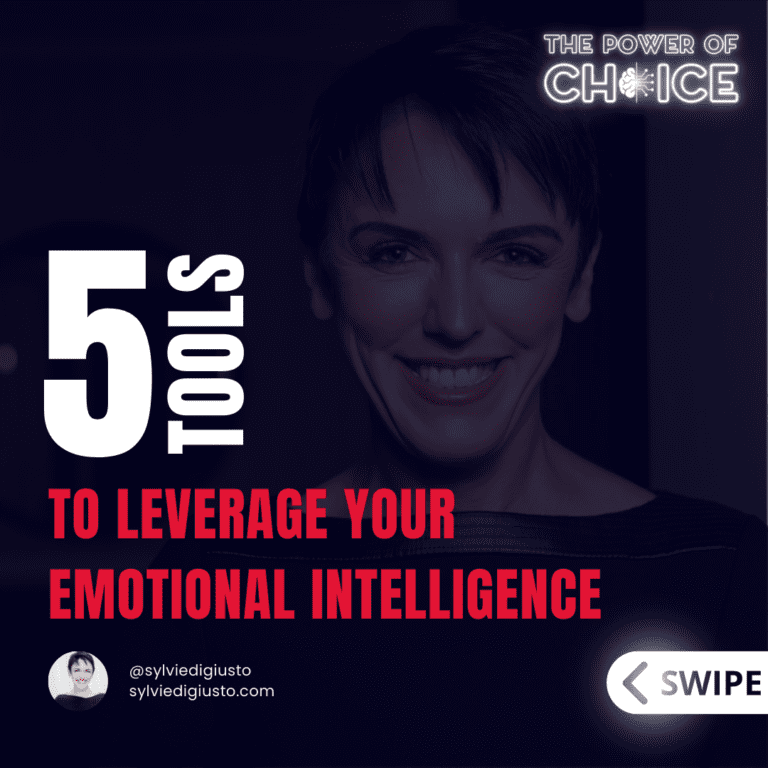
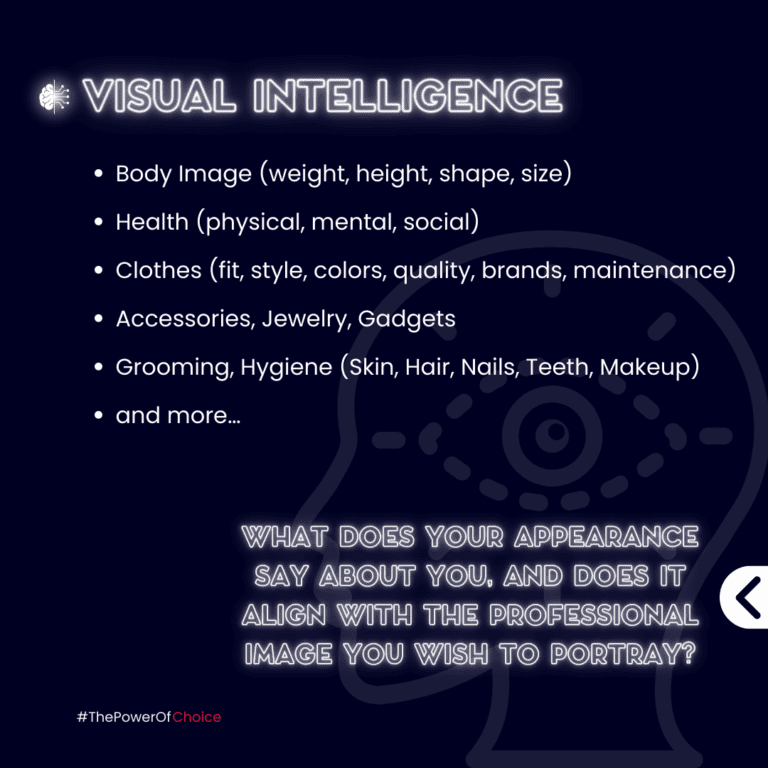
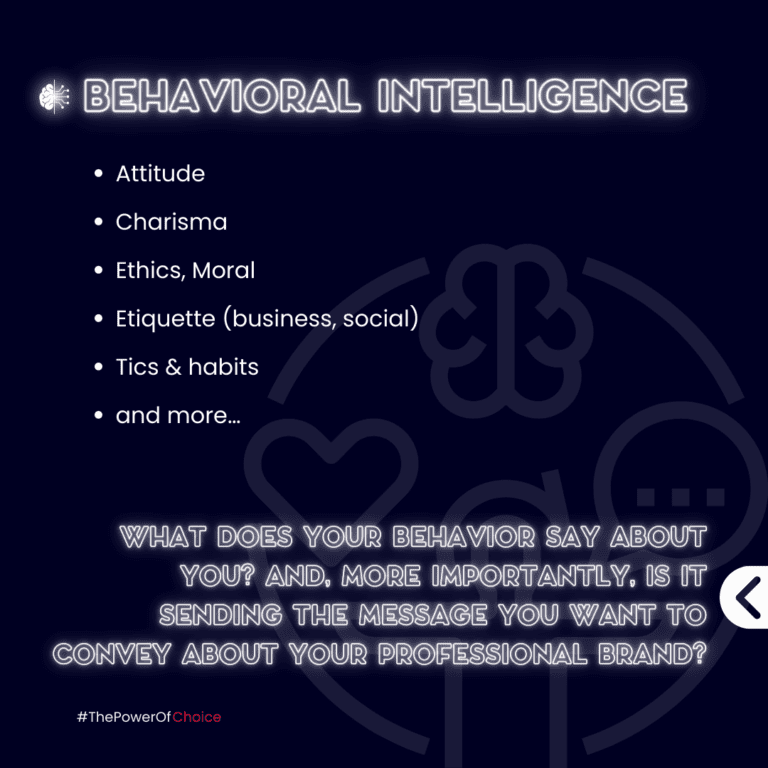
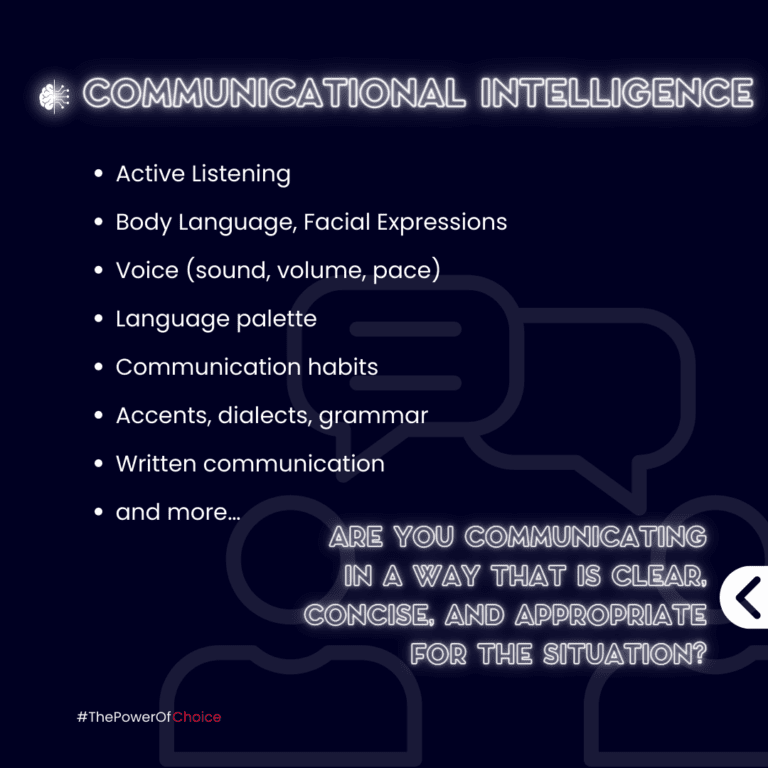
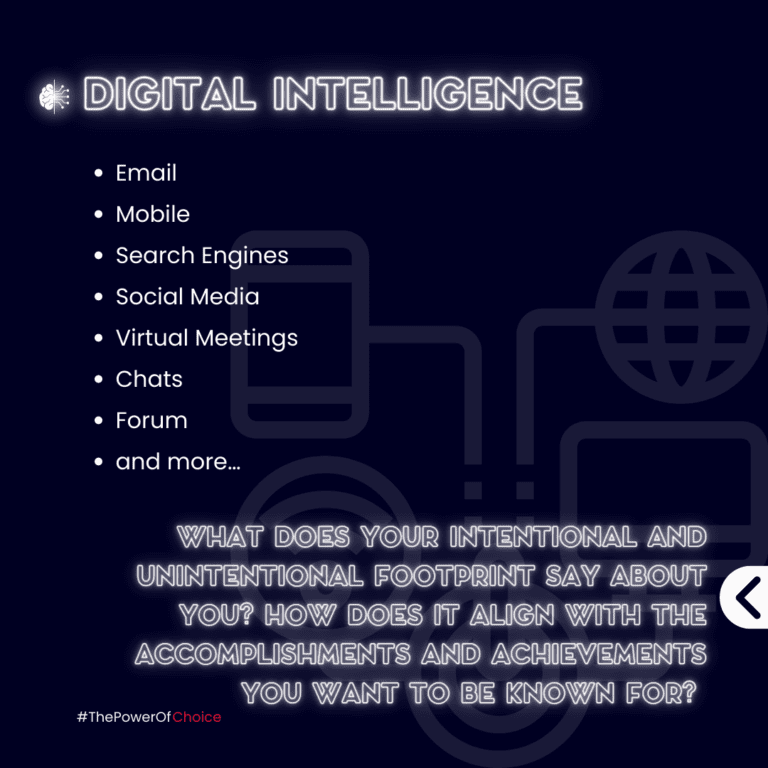
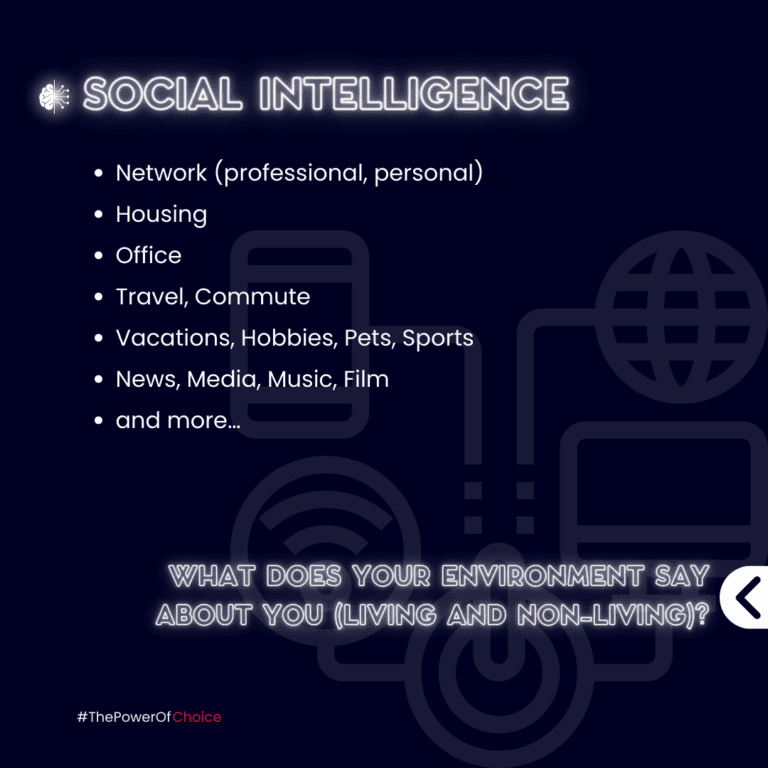
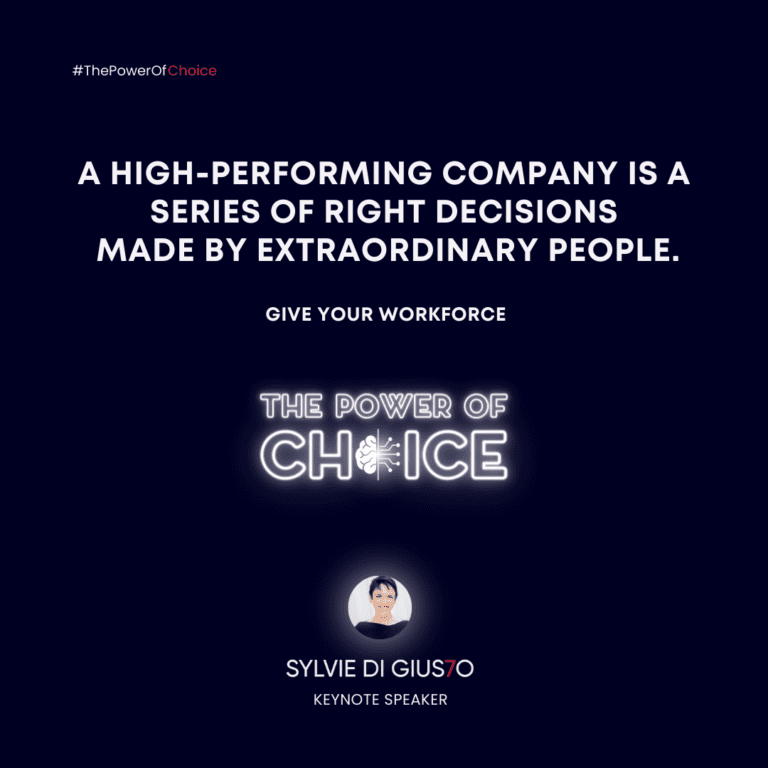
PS: Interested in more content like this? Make sure to follow me on Instagram. It’s where I visualize and publish my thoughts daily. I hope to see you there.
